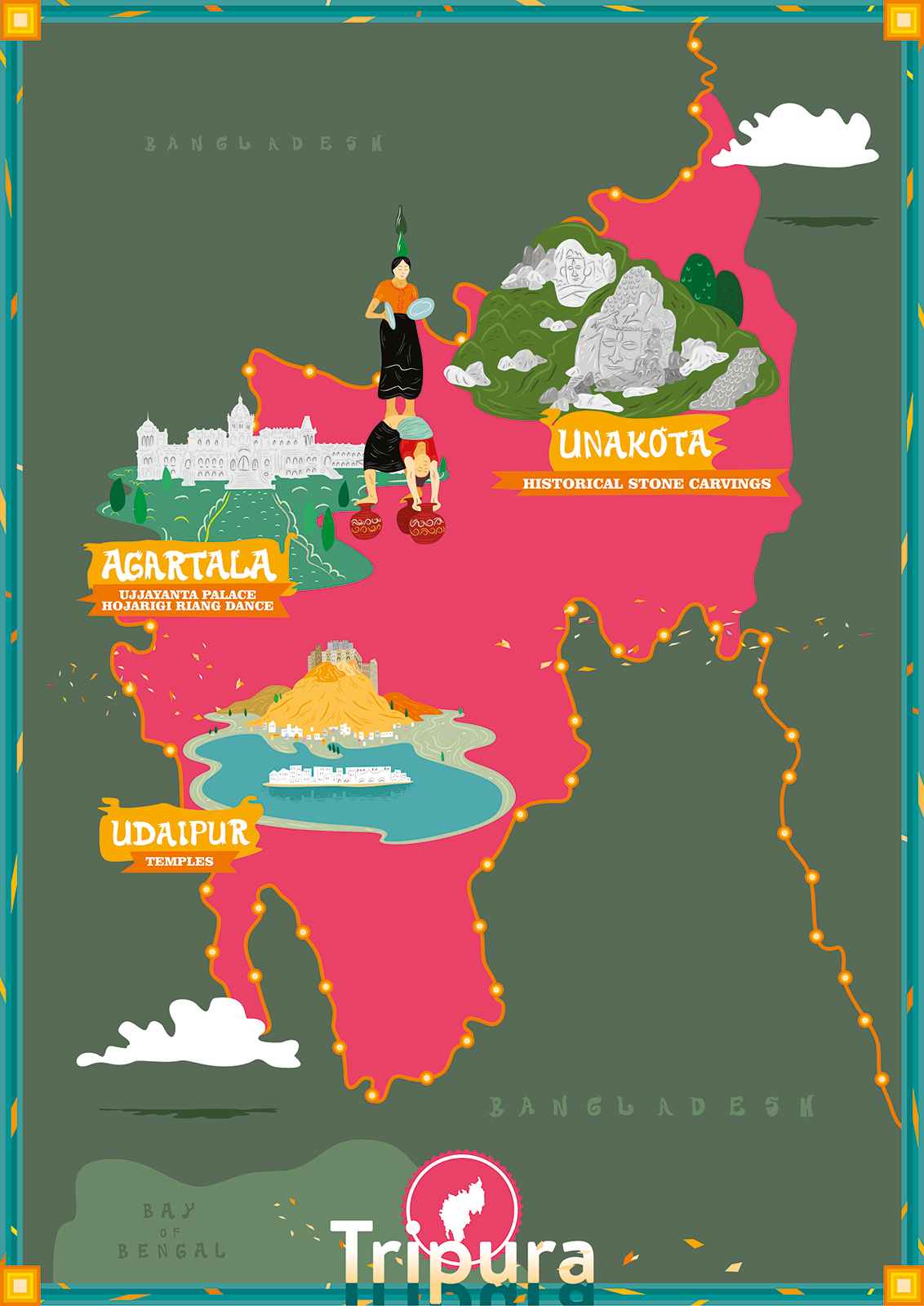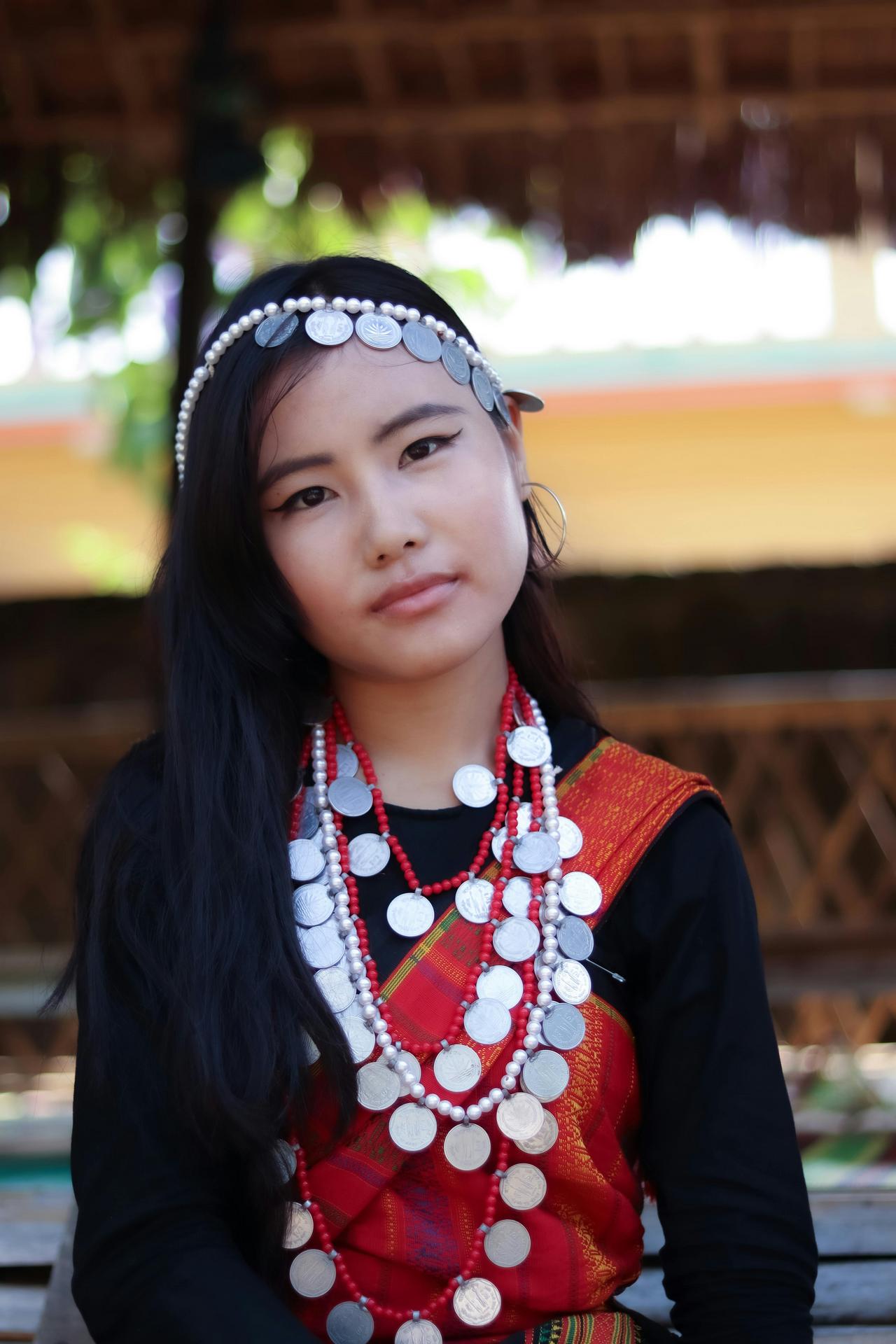Land of Palaces and Temples
Reverend James Long in his 19th century paper in volume 19 of the journal of Royal Asiatic Society of Bengal speaks of the might of this kingdom "The people of Tripura like the Sikhs were a military race, and their soldiers often played the same part as the Praetorian guards did in Rome."


There is a colorful diversity of cultures in Tripura. There are no less than 19 tribes in the state who prefer to live in the hills, such as the Tripuri, Reang, Noatia, Chakma, Garo, Kuki, Uchoi, Manipuri, and Mizo. The majority of the population however are the Bengali Hindu people from mainland India and their culture has influenced the land since the time of the Tripuri kings who were great patrons of Bengali culture, especially literature, and the Bengali language which was used officially in the kingdom's court. The various ethnicities today live peacefully and follow a variety of religions such as Hinduism, Buddhism, Islam, and Christianity along with indigenous beliefs.
The people of Tripura are skilled in the arts and crafts. Handloom is extensively practiced and is peculiar for its horizontal and vertical stripes scattered with colorful embroidery. The people are also extremely skilled in bamboo and cane handicrafts creating items such as furniture, utensils, hand-held fans, replicas, mats, baskets, idols, and decorations.
Music and dance are integral to its various cultures. There are local musical instruments such as the sumui which is a type of flute, kham which is a kind of drum, and the string-based sarinda and chongpreng. The various communities have preserved their own songs and dances that are unique to weddings, religious rites, and festivals. The garia dance of the Tripuri people is a religious performance. The Reang people are known for their hojagiri dance where young girls dance balanced on earthen pitchers. There are many other dance forms in the state such as the lebang dance of the Tripuri people, bizhu dance of the Chakma people, wangala dance of the Garo people, hai-hak dance of the Halam Kuki people, and the owa dance of Mog people.
Tripura is also rich in folklore, myths, legends, proverbs, riddles, and songs. These tales have been woven from the experiences of life and deal with subjects such as gods and deities, demons, witches, history, flora, fauna, the solar system, love, natural phenomena, birds, and animals. Each community represents unique relations with life and the living environment. While some view the sun and moon as brother and sister, others look at them as husband and wife. For some, the milky way is a path of the dead in the hereafter, the rainbow a long serpent who appears on the horizon to drink water from a reservoir, or the thunderstorm strikes where demons and devils dwell.
Sites across the state stand testimony to Tripura's rich culture. From the stone carvings of Unakoti, the palace on the water named Neermahal, to the palatial library of Ujjayanta – a fusion of mainstream religions and indigenous tribal beliefs is evident.
With over a decade of experience as a leading boutique tour operator in the region, travelling to Tripura with Greener Pastures has its merits. Expect hassle-free insightful journeys in the hands of passionate experts.
contact us